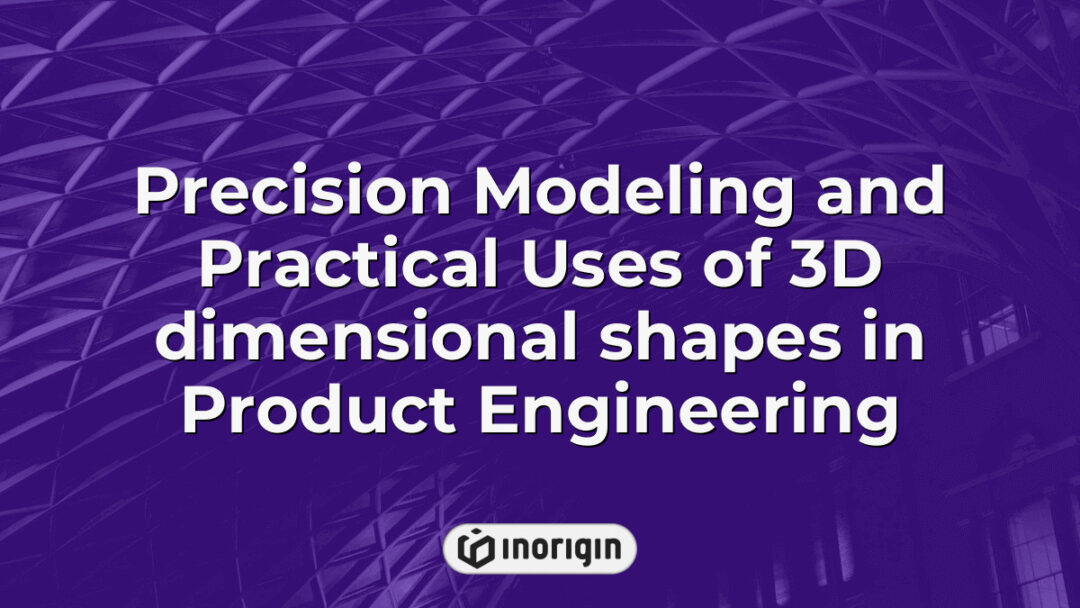The rapidly evolving landscape of financial markets has necessitated the emergence of specialized services designed to adeptly navigate complex trading environments, among which CFD (Contract for Difference) consultancy stands out as a pivotal resource. By providing expert guidance on the intricacies of CFDs—financial derivatives that enable traders to speculate on price movements without owning the underlying assets—this consultancy sector plays an instrumental role in shaping trading strategies and risk management approaches. As market dynamics continue to fluctuate and regulatory frameworks evolve, the importance of informed decision-making becomes paramount, thereby underscoring the critical need for professional consultancy services to equip traders with the necessary analytical tools and insights. This article delves into the fundamental principles and contemporary practices of CFD consultancy, highlighting its significance in fostering informed trading choices in an increasingly complex financial landscape.
| Aspect | Key Takeaway |
|---|---|
| Definition and Importance | CFD consultancy offers expert guidance on Contract for Difference trading, enabling informed strategies in complex financial markets. |
| Trading Support | Experts in CFD consultancy help traders develop risk management plans and optimize decision-making based on market dynamics and derivatives analysis. |
| Core Techniques | The CFD analysis process includes model creation, mesh discretization, boundary conditions, and numerical solving to deliver precise simulations. |
| Industry Applications | CFD consultancy supports sectors like aerospace, automotive, and energy by improving design efficiency and operational performance. |
| Choosing the Right Partner | Successful selection of a CFD consultancy depends on proven expertise, relevant industry case studies, and demonstrated technological capabilities. |
| Technological Trends | Emerging trends include the integration of AI, real-time data analysis, and sustainable modeling practices to enhance consultancy value. |
| Software Tools | Utilizing advanced software such as ANSYS Fluent and OpenFOAM is essential for conducting accurate and customizable CFD simulations. |
Overview of CFD Consultancy Services
CFD consultancy services represent a crucial intersection of science and practice, providing tailored solutions to the complexities inherent in fluid dynamics. Picture engineers meticulously navigating through computational simulations, each variable forming a dynamic equation, offering insights into previously hidden phenomena. These consultancy services, which encompass a broad array of offerings from model validation to optimization, serve a dual purpose: they provide vital support for project development while simultaneously enhancing the understanding of fluid behaviour in diverse environments. By employing sophisticated algorithms and cutting-edge software, consultants can analyse and predict fluid flow patterns, thermal characteristics, and structural performance across various industries—such as automotive, aerospace, and chemical engineering—thus transforming abstract data into actionable insights. A key aspect of CFD consultancy lies in the collaboration between clients and experts, often resulting in refined methodologies and improved design specifications, which are informed by precise simulations and evaluations. Clearly, the integration of consultancy services enables businesses not only to save time and resources but also to innovate within competitive markets. In essence, these partnerships foster a culture of continuous improvement and informed decision-making, rendering CFD consultancy an indispensable component of modern engineering practices.
Key Industries Leveraging CFD Consultancy
In the diverse world of engineering, the utilisation of CFD consultancy services can be likened to the role of a skilled conductor leading an orchestra; each component must harmonise effectively to produce the desired outcome. Various industries, including aerospace, automotive, and energy, depend heavily on computational fluid dynamics (CFD) to analyse fluid mechanics phenomena, which are often complex and multifaceted. For instance, in aerospace, companies apply CFD to design more efficient aircraft, allowing for reduced drag and improved fuel efficiency; this not only enhances performance but also addresses environmental concerns surrounding emissions. Meanwhile, the automotive sector, constantly striving for innovations, employs CFD to optimise vehicle aerodynamics and cooling systems. Transitioning to the energy industry, organisations leverage CFD models to better understand gas and liquid flow within turbines and reactors, which is increasingly critical as the shift towards more sustainable energy sources continues to gain momentum. Such varied applications illustrate the breadth of sectors that greatly benefit from outsourcing CFD consultancy, resulting in advancements that can lead to substantial cost savings and improved operational effectiveness. Thus, the integration of CFD technologies across these key industries stands as a testament to its undeniable impact on engineering and industrial processes today.
The Process and Techniques of CFD Analysis
The process and techniques of Computational Fluid Dynamics (CFD) analysis encompass a variety of methodologies that are essential for accurate modelling and simulations. Initially, the procedure involves defining the geometric model, which serves as the foundation for the analysis; this is often accompanied by the discretization of the domain into a mesh, which can significantly influence the fidelity of the results. Following this, boundary conditions and fluid properties are specified, allowing for the establishment of the governing equations—typically the Navier-Stokes equations—for the fluid flow under investigation. In the context of simulations, numerical solvers play a crucial role, as they iteratively compute the behaviour of the fluid over time, providing valuable insights into aspects such as velocity fields and pressure distributions. Furthermore, visualisation techniques, such as contour plots or streamlines, aid in interpreting complex data, enabling engineers and researchers to assess performance criteria or optimise designs effectively. The overall process highlights the interplay between modelling and simulations in CFD analysis, which not only informs real-world applications but also advances theoretical understanding across various disciplines.
Choosing the Right CFD Consultancy Firm
Choosing the right CFD consultancy firm can be likened to selecting a navigator for a complex journey across uncharted waters; without the right guidance, the path may be fraught with pitfalls and uncertainty. In the realm of computational fluid dynamics (CFD), a meticulously chosen consultancy not only assists firms in simulations and analyses but also plays a crucial role in optimising designs and enhancing operational efficiencies. When evaluating potential consulting service providers, it is essential to consider several factors including the consultancy’s expertise in industry-specific applications and their historical performance in delivering solutions that meet clients’ needs. Furthermore, firms should examine case studies or data points indicative of previous successful engagements—this may reveal the consultancy’s aptitude in handling varied projects, such as wind tunnel tests or thermal management issues. For example, a consultancy that has notably reduced simulation times by over 30% for a major aerospace company could indicate the potential for significant time and cost savings for new clients. Ultimately, assessing a consultancy’s technological capabilities, response times, and client relationship approaches will provide insight into which firms are most suited to support specific CFD analytics requirements, enabling businesses to achieve their operational goals efficiently and effectively.
Future Trends in CFD Consultancy
The future trends in CFD consultancy are shaped by several interlinked factors that reflect both technological advancements and evolving client expectations. To begin with, the adoption of artificial intelligence and machine learning in CFD software will enable more rapid and accurate simulations, transforming how consultants analyse fluid dynamics and thermal environments. Following this, the growing emphasis on sustainability is pushing firms to incorporate eco-friendly solutions into their modeling processes, compelling clients—especially in industries like renewable energy—to seek consultants who understand sustainable practices. Simultaneously, the demand for real-time data integration is gaining traction; clients are increasingly leaning towards consultancies that can provide immediate insights and predictive analyses within their workflow, necessitating upgrades in both hardware and software capabilities. As collaborative platforms become more mainstream, firms will need to develop a strategy for fostering interdisciplinary approaches that unite engineers, data scientists, and environmental experts, thereby enhancing the quality of consultancy services. The emphasis on these trends reveals much about the direction of CFD consultancy, underscoring an urgency for firms to adapt and innovate in a competitive market, where agility and responsiveness may very well dictate long-term success.
Frequently Asked Questions
What qualifications should I look for in CFD consultants?
What qualifications truly matter when selecting CFD consultants? This inquiry serves as a foundation for understanding the essential attributes that constitute skilled professionals in the field of Computational Fluid Dynamics. Educational background often stands at the forefront, with a degree in engineering, particularly in aerospace, mechanical, or civil disciplines being commonplace; advanced degrees, such as a Master’s or PhD, can indicate a deeper level of expertise and commitment. Licensure can also play a role, with many consultants possessing professional engineering qualifications that validate their capabilities. Experience is equally significant, as hands-on work with CFD tools and simulation software, ranging from ANSYS Fluent to OpenFOAM, enables a consultant to apply theoretical knowledge effectively. Additionally, familiarity with industry standards and practices, as well as prior project involvement in sectors like automotive or energy, can provide crucial insights that enhance problem-solving skills. The increasing complexity of CFD applications demands not merely technical proficiency but also strong analytical abilities and a nuanced understanding of fluid dynamics principles. Therefore, when considering whom to engage for CFD consultancy, a careful evaluation of these qualifications is indispensable.
How long does a typical CFD analysis project take?
The duration of a typical computational fluid dynamics (CFD) analysis project can vary significantly, influenced by several factors, including the complexity of the model, the objectives of the analysis, and the resources available. Generally, a basic CFD study might take anywhere from a few days to several weeks, whereas more intricate projects could extend over months, particularly in cases involving detailed simulations of multifaceted phenomena, such as turbulent flows in industrial applications or aerodynamic studies for aerospace designs. Transitioning from initial modelling to validation, the iterative nature of CFD often necessitates several rounds of adjustments based on preliminary results; this iterative process can introduce further delays if critical parameters are not optimised upfront. Additionally, the involvement of multidisciplinary teams can either streamline the process—by pooling expertise—or complicate it, depending on the communication and collaboration dynamics. Ultimately, a well-defined scope and clearly established objectives play a crucial role in determining the timeline, allowing for a more efficient workflow, while also enhancing the overall quality of the analysis.
What software tools are commonly used in CFD consultancy?
In the world of computational fluid dynamics (CFD) consultancy, software tools serve as the foundational bedrock upon which simulations are constructed and analyses are performed. Various programmes, ranging from well-known commercial packages such as ANSYS Fluent and Siemens’ Star-CCM+ to open-source solutions like OpenFOAM, are employed to model complex fluid behaviours and thermal interactions. ANSYS Fluent, renowned for its expansive capabilities in fluid flow simulation, effectively renders intricate geometries and flow conditions with precision, while Star-CCM+ often excels in multi-physics applications, integrating solid mechanics with fluid dynamics. On the other hand, OpenFOAM, with its adaptable framework, is favoured by many for customisation, allowing for tailored simulation processes that conventional software might not readily support. Transitioning from basic visualisation tools to advanced optimisation software, the spectrum of applications illustrates the diverse needs of engineering projects; tools like COMSOL Multiphysics enable users to conduct fluid-structure interactions and thermal analyses simultaneously, illustrating the marriage between fluid dynamics and other engineering disciplines. Through the integration of these tools, firms can harness computational power to uncover insights that were previously shrouded in ambiguity, ultimately leading to more informed decision-making in design and analysis. Such software tools are indispensable in the pursuit of efficiency and accuracy within CFD consultancy, facilitating innovation and advancing the engineering frontier.
Conclusion
In conclusion, the significant synergy of expert cfd consultancy cultivates clarity and confidence in complex fluid dynamics. This transformative approach not only enhances understanding but also empowers innovative solutions, ultimately bridging the gap between theoretical concepts and practical applications, fostering a future where fluid movements are masterfully managed and meticulously optimized.
Related posts:
- How Can Computational Fluid Dynamics (CFD) Improve Product Performance Through Precision Simulation and Design Optimization
- How Can Computational Fluid Dynamics Enhance Product Design? Advanced Applications Driving Innovation at Inorigin
- How Can Computational Fluid Dynamics Benefit Product Design to Enhance Efficiency and Speed Innovation at Inorigin
- How Can Computational Fluid Dynamics Improve Product Design by Accelerating Innovation and Precision at Inorigin
- What is CFD Simulation Revealing About Advanced Product Design at Inorigin
- How Can Computational Fluid Dynamics Improve Your Product Design by Enhancing Performance and Efficiency




